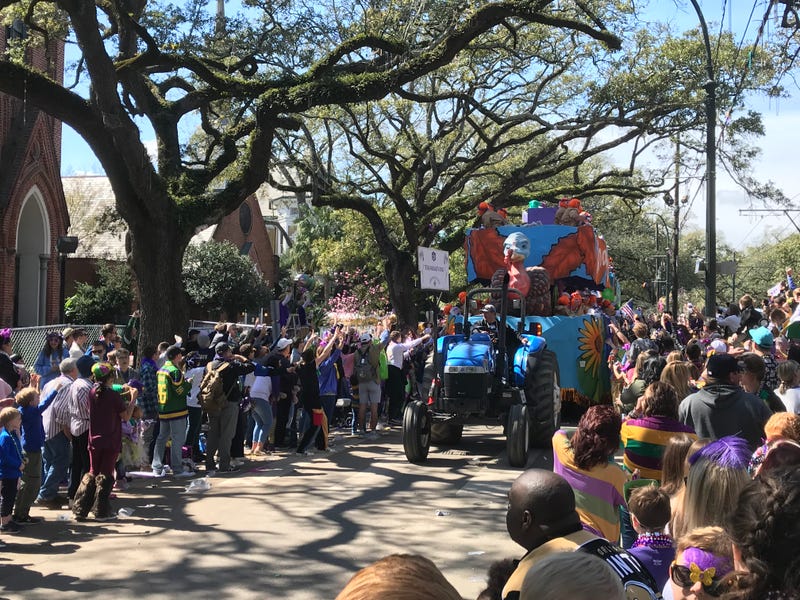
Mardi Gras 2020, just weeks before the World Health Organization declared a COVID-19 pandemic, may have led to as many as 50,000 cases, according to a Tulane University study.
The study examined death data, genome sequencing of virus samples, and cell phone data tracking to construct a picture of how the virus arrived in New Orleans, and how it spread afterward. The study awaits peer review.
It found that the virus likely arrived domestically, possibly via Texas, due to early strains being genetically similar to one another. Once here, the virus found a perfect environment for spread: crowds of people packed shoulder-to-shoulder at parades, in the French Quarter, at balls and parties and elsewhere, engaging in the kind of social behavior that helped the respiratory virus move from person to person.
The study says the virus spread undetected. The Mardi Gras parade season in 2020 began February 14 and ended on Fat Tuesday, February 25. The first Louisiana case of COVID-19 was not confirmed until March 9, 2020.
While it is likely Mardi Gras helped spread the virus in the south, the study finds travel restrictions and stay-at-home orders that followed soon afterward largely kept the strain that was spreading here from moving nationwide.
